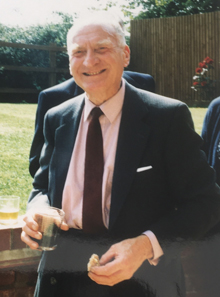Professor Gordon (Bunny) Leff, 1926-2020
 Gordon (‘Bunny’) Leff’s death on 19 March 2020 is an occasion for a note on the history of interest in medieval heresy and inquisition at the University of York, and the York element in the ancestry of the Doat Project.
Gordon (‘Bunny’) Leff’s death on 19 March 2020 is an occasion for a note on the history of interest in medieval heresy and inquisition at the University of York, and the York element in the ancestry of the Doat Project.
Bunny Leff was a member of the Department of History at York from 1965, retiring in 1988 and thereafter Emeritus Professor. Though his principal concern was the history of medieval scholastic thought, medieval heresy also preoccupied him. His Festschrift contains an excellent bibliography compiled by Simon Ditchfield; The Medieval Church: Universities, Heresy and the Religious Life. Essays in Honour of Gordon Leff, ed. Peter Biller and Barrie Dobson (Woodbridge, 1999), pp. 325-42. There you can trace his publications in this field, beginning with a Past and Present article in 1961, ‘Heresy and the Decline of the Medieval Church’, and culminating in 1967 with the massive two volumes of Heresy in the Later Middle Ages: the Relation of Heterodoxy to Dissent c.1250-c.1450. Those interested in the historiographical analyses of these should not forget that they were written by a former member of the Communist Party, for whom orthodoxy and dissent had a mid-20th century resonance. .
Bunny Leff, therefore, is the earliest figure on the family tree of academic interest in medieval heresy in the Department of History at York. In 1967 Bunny became the (externally appointed) supervisor for Pete Biller’s Oxford PhD on medieval Waldensians and inquisition. Bunny also supervised Michael Guilding (History Graduate of 1974) for two years working for a PhD on the sacramental theology of John Wycliffe; this was not finished. Pete Biller started lecturing in the Department in 1970. To help the setting up of a Special Subject on medieval heresy and inquisition, the Department purchased microfilms in the 1970s of inquisition trials in Collection Doat Mss 21-6 of the French National Library and Ms 609 of the Municipal Library in Toulouse. .
From this point on this cache of original materials and teaching in the Department fuelled interest in and work on southern French heresy and inquisition. An American student, Nicole M. Shulman, used the Doat Mss to write a York MA on a heretical noblewoman, Domina Finas, before returning to the USA to write the book for which she is mainly known, a monograph on the Toulouse bishop and pursuer of heretics, Fulk of Marseille. A special subject on Heresy and Inquisition was set up, using these materials in translation, and York students who took this Special Subject and went on to do York PhDs and to publish on this theme include John Arnold (Inquisition and Power, 2001) and Chris Sparks (Heresy, Inquisition and Life-Cycle in Medieval Languedoc, 2014). In the late 1990s Caterina Bruschi came from Bologna to York to work on these materials (The Wandering Cathars of Languedoc, 2009), and the AHRB funded a two-year research assistantship (2000-2002) for Shelagh Sneddon to come to York to transcribe and translate to the trials in 400 folios of the Doat manuscripts. Collaboration in York between Biller, Bruschi and Sneddon led to the publication in 2011 of their Inquisitors and Heretics in Thirteenth-Century Languedoc: Edition and Translation of Toulouse Inquisition Depositions 1273-82. Lucy Sackville came to York to take an MA (and in that a course on medieval heresy), and proceeded from this to a PhD (published in 2011, Heresy and Heretics in the Thirteenth Century: The Textual Representations). A Senior Lecturer in the Department of History, she continues to teach the (very modernised) version of the Special Subject. .
The line of descent is by PhD supervision – Leff to Biller and Guilding, Biller to Arnold, Sparks and Sackville – it continues with Sackville supervising PhDs on heresy, the first of which was successful submitted in 2019. But much of the life of this tradition is collaboration across rather than in line with academic generations. Arnold and Biller collaborated in a volume of translations (Heresy and Inquisition in France, 1200-1300), some of which used used the materials in York. And of course there is Biller, Sackville and Sneddon collaboration in the AHRC funded the research project for their edition of trials in Doat Mss 21-24, to which this website is dedicated.
Bunny Leff, then: the ancestor.